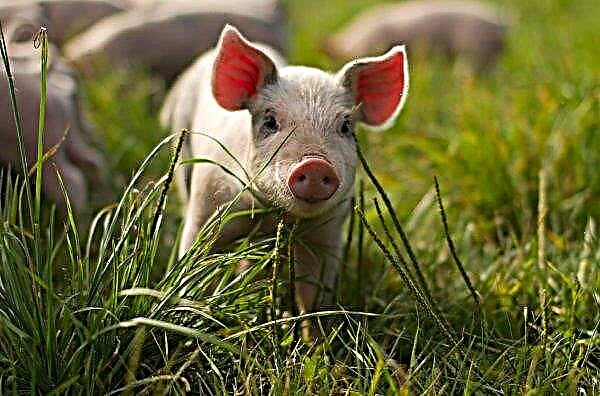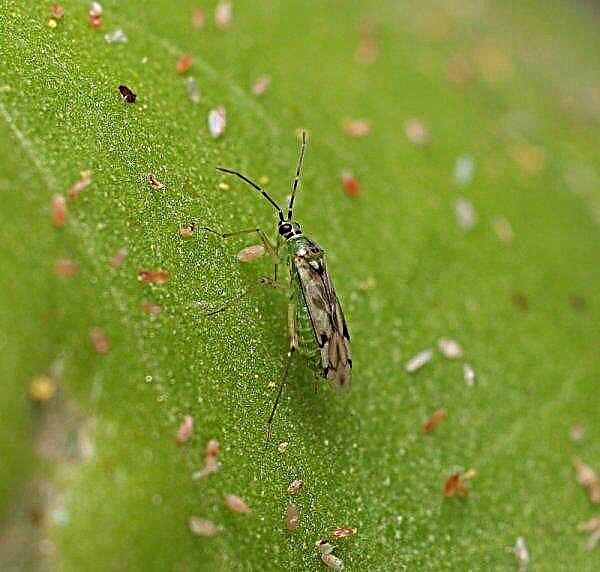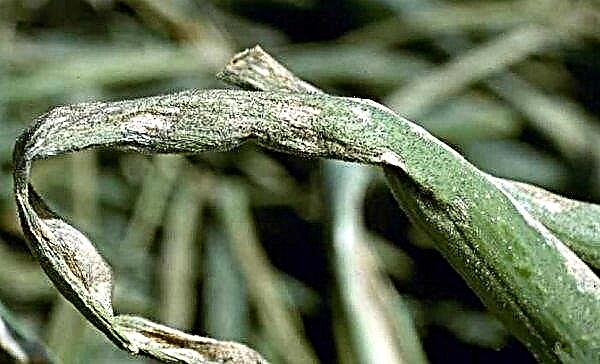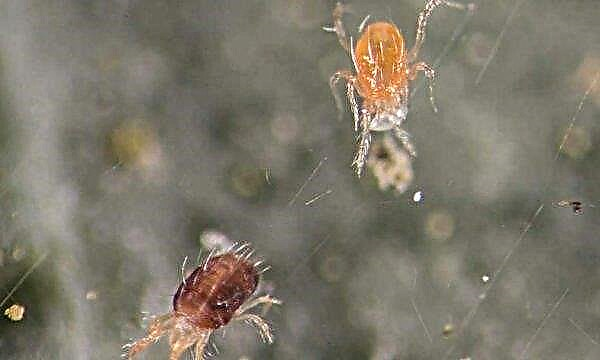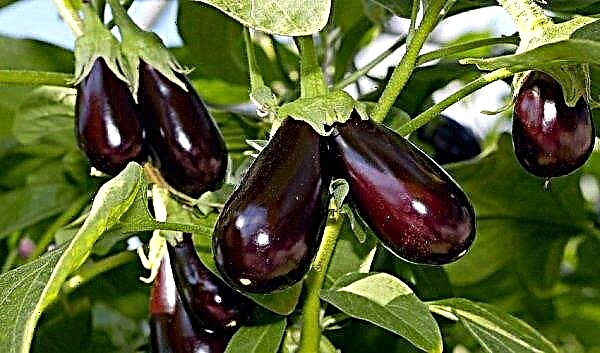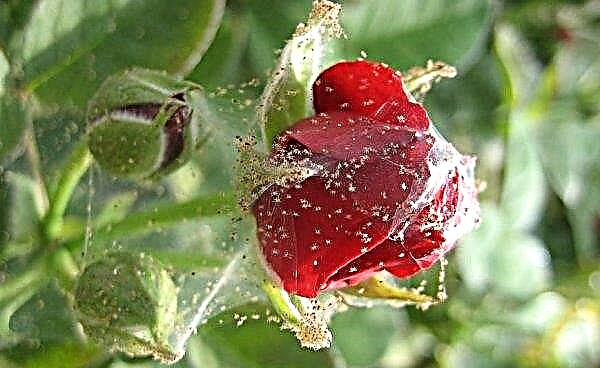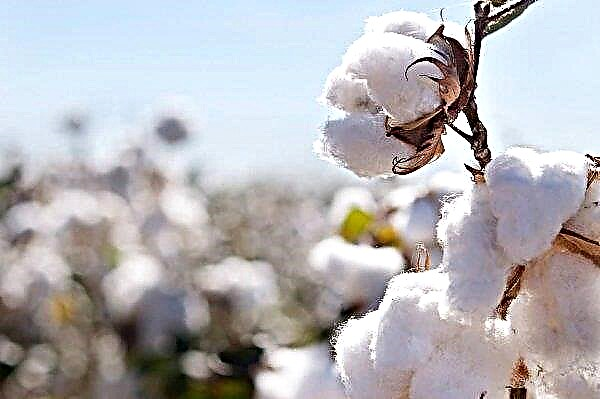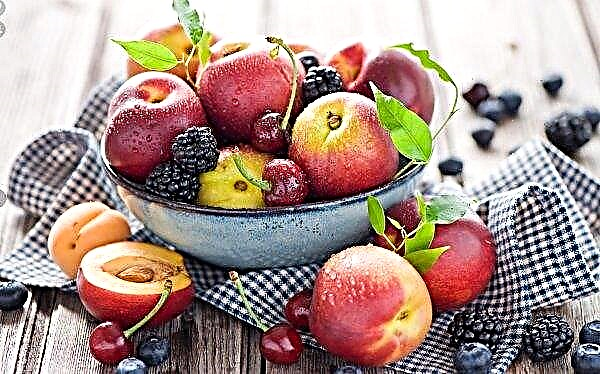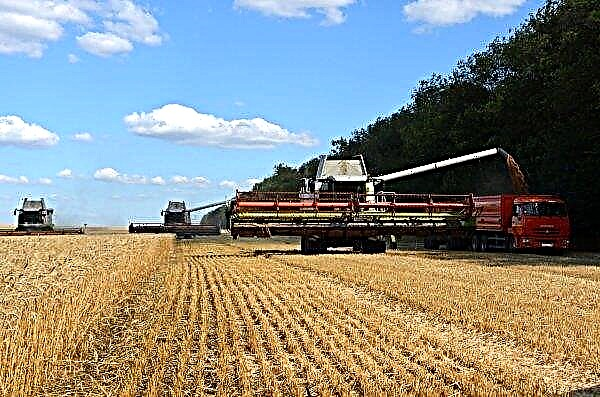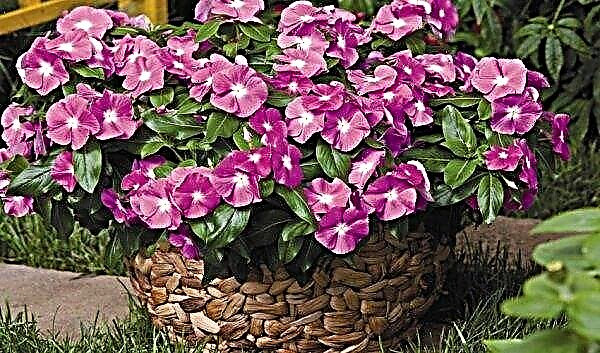Among farmers, it becomes important to plant ducks as farm birds. Learn more about her.
Description
The birthplace of this bird, according to its name, is Beijing. After some time, she naturally appeared in European and American countries. Through its productivity, the Peking eclipsed all other duck breeds.
Appearance
The appearance of Beijing is pretty standard. They are similar to ducks of other breeds, but there are certain differences. Peking breed is recognized by such signs:
Peking breed is recognized by such signs:
- elongated torso;
- long back;
- wide chest;
- a small, slightly upturned tail;
- strong case;
- large head, forehead slightly flattened;
- Muscular neck
- the color of the legs is orange, the location relative to the body is near the tail;
- large enough wings adjacent to the body;
- eyes are small, bright, dark blue;
- plumage is thick, white color.
Did you know? The feathers of these birds do not get wet in the water. They are covered with a special fat layer that protects the bird from getting wet in the pond.
Productive Characteristics
Peking duck breeding is an effective way to get high-quality meat products. The productivity of ducks can be estimated by the following facts:
- This bird weighs from 3 to 3.5 kg, and the weight of the drake at the time of slaughter can reach more than 4 kg with proper and rational nutrition.
- Rapid onset of puberty and early reproduction.
- Birds are resistant to various diseases.
- By taste, their meat is very juicy, moderately fat, used in various recipes. The fat content of the product depends on the feeding and age of the bird.
- The egg laying of the female begins in the thirtieth week. In a year, a bird is able to give 120–130 eggs. Egg weight - 90 grams.

How to distinguish a drake from a duck
The difference between a female and a male is a serious aspect in the process of growing ducks, since the correct ratio of those and other individuals will allow to obtain high-quality products and increase egg production in the herd.
You can distinguish a drake from a duck by the following external indicators:
- body size is larger than that of a female;
- wide triangular forehead;
- wide beak;
- the tip of the tail is slightly bent;
- has a beard of feathers.
 It is possible to distinguish a male from a female by voice. Drakes are not loud in nature, they like to hiss softly, and females, on the contrary, quack loudly.
It is possible to distinguish a male from a female by voice. Drakes are not loud in nature, they like to hiss softly, and females, on the contrary, quack loudly.Did you know? The noise that a female makes - quack - does not reproduce the echo.
It is not recommended to use only one method to find out the gender of the birds.
Pros and cons of the breed
You must familiarize yourself with the list of qualities of this breed before starting to breed it.
- Benefits:
- quick adaptation to weather conditions;
- not picky in food;
- rapid increase in body weight;
- accelerated puberty.
- Disadvantages:
- the instinct of incubation is not developed;
- do not tolerate dampness and humidity.
Breeding Features
The content of this breed is very popular among farmers, as little ducklings instantly adapt to living conditions, and the mortality rate among young animals is low.
In the first weeks of life, ducklings are kept in a drawer. In order to keep warm in their home, it is necessary to use a heater or place a heating pad there. The air temperature should be 30 ° C. Avoid overheating and drafts - sharp temperature deviations from the norm adversely affect the health of babies. For broods, an older house with an iron coating and dry bed is purchased or built older.
For broods, an older house with an iron coating and dry bed is purchased or built older.
Important! There is no need to lay sawdust on the floor, as ducks can peck them instead of food - such heavy food clogs their stomach and can cause death.
To avoid molting, it is recommended that after seventy days of the bird's life, take it to slaughter. Shedding causes the following negative aspects of bird keeping:
- growth slows down;
- the amount of feed increases dramatically;
- it is difficult to remove feathers from the duck after slaughter.
Content
To grow good, healthy ducks, you need to take care of their content. A home for Peking is being built taking into account the following recommendations:
- The house is made of bricks or logs. If the floor of the room is concrete, it should be covered with bedding. The main material of the litter is straw. Cleaning the straw on the house floor is often necessary. In the year you will need 20 kg of litter for one individual from the herd.
- For a comfortable existence, ducks should be kept at a temperature of 10 to 20 ° C.
- Lighting for bird growth plays an important role. In winter, the house must be illuminated with additional substitutes for light, as daylight hours are short. In poultry farming, three types of lamps are used: incandescent, fluorescent, LED. An incandescent lamp is inexpensive at cost and is installed in small rooms; requires frequent replacement. Fluorescent tubes are easy to install, durable, and also economical. LED illuminators are expensive at cost, but pay off in a short time - the lamps are energy-saving, illuminate the room well, and easily adjust the degree of illumination.
- Birds should be kept in a darkened room per day and rest for about 11-12 hours.
- One individual should occupy approximately one fourth quarter. meters in the house.
- A threshold of 5 cm is placed at the entrance to the room. Doors are constructed with a size of 40 by 40 cm. It is recommended to install a bird hole in the south.
- It is necessary to place the nests in the free space of the house. Wood and plywood are the main materials used in the construction of nests. The size of the nest is 1.5m.
- Ducks are water birds, and they like to spend time in a pond or in the fresh air. To do this, it is preferable to assign them an individual territory. To prevent the herd from freezing, drive them into the house at nightfall.
- Humidity above 70% has a negative effect on bird health. It is also not recommended to let ducks out at a temperature of less than 5 ° C. The ideal temperature for outdoor walks is 16 ° C.
- Duck feeders and drinking bowls are built from sustainable materials - for example, from thick wooden boards. To feed a mature individual, feeding troughs and drinking bowls are made in the size of 23 by 110 centimeters, for ducklings - 15 centimeters per 1 meter.


In terms of size, the cage should correspond to the growth of the duck and allow it to move freely. The frame of the cell can be created from wood or mesh. The floor is best made from boards so that the paws of the bird do not get stuck. The Peking duck is gaining weight faster in the cage than its cousins, who are in the house.
Nutrition
With proper and rational nutrition of birds, the farmer will eventually receive high-quality meat products. To feed a healthy bird, you must give it the following food:
- wheat;
- corn;
- peas;
- oats;
- barley;
- greenery;
- compound feed.

Adults
Peking ducks have a faster metabolism than other breeds. Based on this, the bird must be constantly supplied with food.
To effectively feed the bird, you must follow these recommendations:
- The duck must be fed with ground feed or compound feed.
- The bird should receive a sufficient amount of fresh fluid, at least one liter per day.
- Feed livestock is required three times a day. In the morning and in the afternoon they give wet food, in the evening they pour grain.
- Food must be fresh.
- You can not change or disrupt the diet of a duck, this will badly affect its health.
 On the day, the duck should receive:
On the day, the duck should receive:- 80 g of oats;
- 75 g of barley;
- 60 g of bran;
- 40 g of fodder beets;
- 15 g peas;
- 40 g of greens;
- 9 g of chalk.
Young animals
Immediately after the plumage dries, the ducklings begin to eat actively. In the first days of life, ducklings are fed a boiled egg and cottage cheese.  After 3-4 days, finely chopped greens and chopped shells are added to the diet. It is necessary to feed ducklings five times a day, in general, the amount of food is 200-300 g.
After 3-4 days, finely chopped greens and chopped shells are added to the diet. It is necessary to feed ducklings five times a day, in general, the amount of food is 200-300 g.
Important! DTo strengthen immunity, it is necessary to provide young animals with vitamins and minerals. Special vitamin supplements for ducklings contain the substances they need.
Possible diseases
Even with persistent immunity, the Peking duck is exposed to various diseases. Most illnesses are due to improper care or inappropriate conditions.
Avitaminosis
A clear sign of vitamin deficiency is a decreased appetite, lethargy of the duck, it poorly coordinates its movements. Growth is halting.
The disease manifests itself as follows:
- cramps
- sore nostrils;
- sharp loss of feathers;
- rickets.

Goiter disease
In the process of feeding, the bird can swallow a foreign object or a large lump of food. This leads to blockage of the goiter.
To independently help the bird, you need to turn it upside down, while holding its paws, and try to clean the goiter. If you cannot clean the duck's beak, contact your veterinarian for help. As a prophylaxis of goiter diseases in birds, it is necessary to carefully check the feed before serving.
Coccidiosis
Coccidiosis is an infectious disease. It is usually carried through feed or herd equipment. It can be concluded that the livestock disease is present if the following symptoms are expressed in birds:
- lack of appetite;
- weight loss;
- reduced egg production;
- bloody and frothy stools.
 With the disease, even one individual needs to be disinfected for the entire herd with a solution of formalin and potassium permanganate.
With the disease, even one individual needs to be disinfected for the entire herd with a solution of formalin and potassium permanganate.Aspergillosis
Aspergillosis (aspergillus reproduction in the lung fungi) is mostly affected by small ducklings. They have difficulty breathing, wheezing, fluid from the beak, growth retardation, paralysis of the limbs, loss of appetite.
If the disease is noticed, it is necessary to disinfect the house with a solution of copper sulfate. Food needs to be completely renewed in feeders by adding nystatin to it.
Pasteurellosis or Cholera
Pasteurellosis (cholera) is an infectious disease. Most often transmitted by airborne droplets, can spread through food and equipment. With it, a duck releases fluid from the mouth, the temperature rises, which causes intense thirst and lack of appetite. The bird looks apathetic, the discharge has a bloody foamy structure. All infected birds are slaughtered. Healthy individuals in contact with the sick are given biomycin and sulfadimezin.
All infected birds are slaughtered. Healthy individuals in contact with the sick are given biomycin and sulfadimezin.
Peking ducks are a common species of farm birds. If you take care of them fully, the owner will get tasty and juicy meat, as well as healthy offspring.

